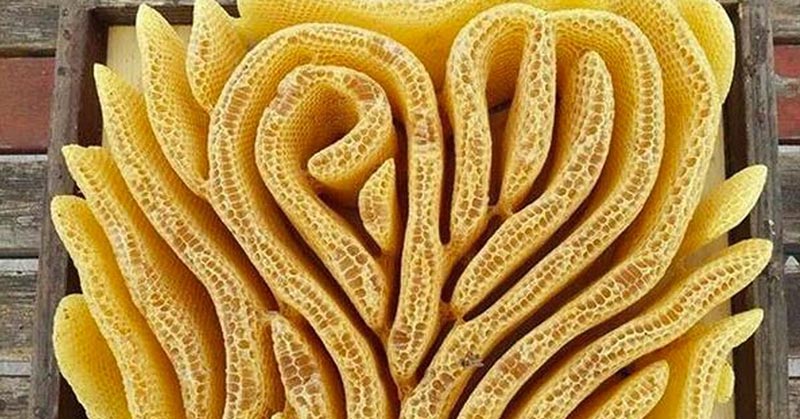Apiculturists often use rectangular frames to guide bees in building hives, but some species, like the Australian sugarbag bees, can create beautiful hives without them. These stingless bees form spiral structures on flat surfaces, creating intricate and aesthetically pleasing designs like the heart-shaped hive found at Bodiam Castle in the UK.
How and why do they make spiral hives?
These stingless bees build spiral colonies regardless of the shape or size of the frame, showing their preference for complex structures. The reason behind this behavior is still unclear, but it may aid in colony navigation and ventilation. The cell building process is meticulous, with worker bees tirelessly constructing cells that ascend upward in curves until the space is fully covered.
“What we’re looking at is the advancing front of a stingless bee colony,” says entomologist Tim Heard. “In the middle of the spiral, you have to construct cells that move with the change. The cell is almost completely filled with food, and only then will the queen accept that cell for egg-laying.”
Honey production and colony defense
Stingless bees produce flavorful honey by sticking to specific species of flowers, resulting in a more distinct taste. Their honey is highly concentrated and ripens quickly due to water homeostasis within the nest. In terms of sweetness and taste, stingless bee honey rivals that of honeybees. These bees defend themselves by biting and injecting formic acid, a less lethal but effective defense mechanism compared to honey bees’ stinging.






